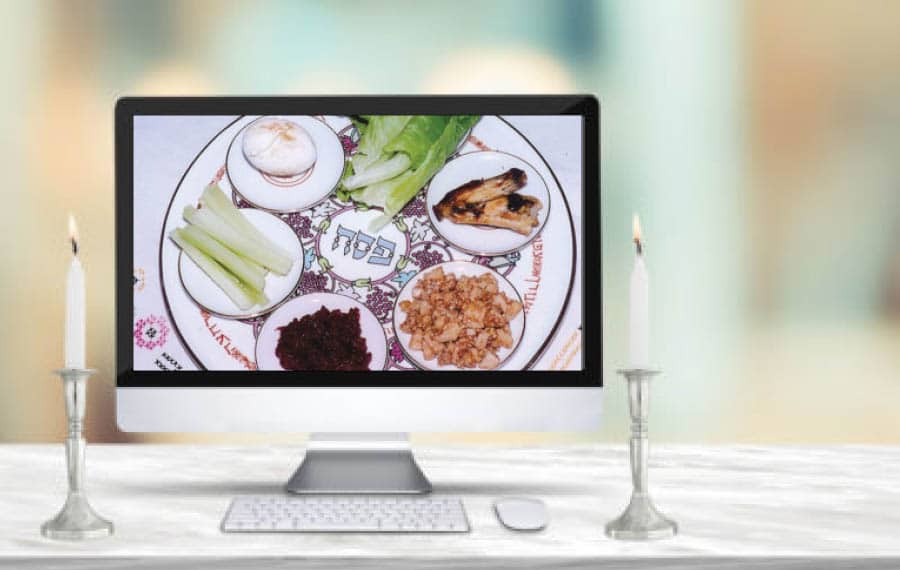
Passover is a big deal in my house. The second seder is my big night. I plan for weeks, working off spreadsheets that get updated every year. I clear out my living room, rent tables and chairs, methodically shop and cook, revise the haggadah, plot out the guest list. It is a huge production. Normally, there are about 30 to 34 people around the table, limited only by the size of my house, and there sometimes is fierce competition for a seat.
This year was different. No furniture was ordered, no big shopping trips were undertaken, and merely a small portion of the cooking happened. I set the table for two, with a sense of sadness and loss. I missed the high-pitched frenzy of the preparations and the feeling of joy that arrives annually with the intersection of Passover and the emergence of the first spring blossoms.
My daughter got stuck in Berkeley and couldn’t get home for Passover, which made the prospect of Passover even gloomier. But she insisted we go ahead with seder plans, convincing me that planning this virtual seder together was the next best thing to being together in person, and we invited our regular attendees to a Zoom seder. We realized that one benefit this Zoom seder offered was that we could include people who wouldn’t normally be able to attend.
We knew it was going to be chaotic, but it turned out to be surprisingly manageable. We used the Zoom polling feature to enable people to learn a little bit about who was gathered with us, since it included relatives and friends from different parts of our lives, as well as some of their friends and relatives.
“Although we didn’t get to share the same meals, we did have a shared and deep experience together.”
To engage in meaningful conversations, we used the breakout-room feature, which meant that people who didn’t know one another had a few minutes to discuss a question we posed: What narrow place do you need to leave this year? That question seemed particularly timely, and from all reports, people jumped right into serious conversations.
At the conclusion of the night, I realized we had had a real and meaningful seder experience. It might have been through a screen, but there was nothing virtual about it. We moved through all 14 steps of the seder; read poetry alongside the traditional liturgy; drank our wine and ate our karpas, matzo and maror; and argued and explained and sang together.
It felt like, well, a Passover seder.
Some traditions, such as beating one another with scallions, didn’t seem translatable for a digital seder, so we left them out, but some worked very well on Zoom. Elijah even logged on at one point and honestly, I still don’t know which clever participant managed that. Moreover, as is our family tradition, when it was time to open the door for Elijah, my son threw on a disguise, added a surgical mask and showed up on screen to drink from Elijah’s cup.
As Jews, we have gone through much worse and still managed to celebrate Passover as best we could, so why not now? We laughed; we argued about purity versus cleanliness; we discussed the symbolism of the items on the seder plate; we marked the losses of loved ones since last Passover; we heard the Four Questions beautifully sung by the youngest on the screen.
My daughter had sent out a brief note ahead of time instructing people what to prepare for their own seder plates, and I realized as we were moving along in the haggadah that for many of our guests, it was the first time they had ever prepared their own seder plates. She asked them to take photos and send them to us. How moving it was to see the seder plates from coast to coast, to note what they had in common and how they differed by what substitutions or additions were made by necessity or by choice. It was, in the end, an unexpectedly profound experience of resilience, history and tradition.
Rabbi Hara E. Person is a writer and editor of books for adults and children.






















 More news and opinions than at a Shabbat dinner, right in your inbox.
More news and opinions than at a Shabbat dinner, right in your inbox.